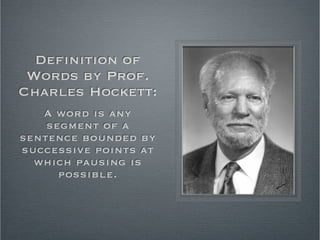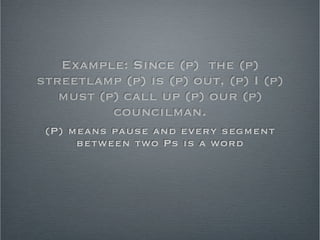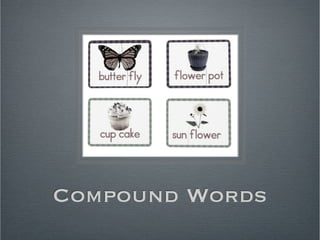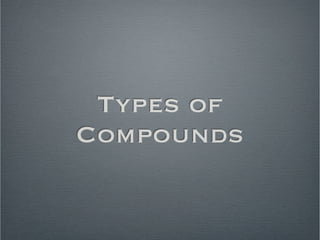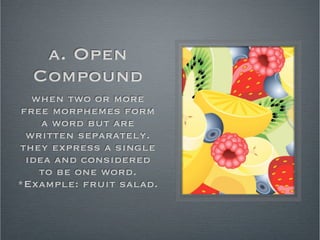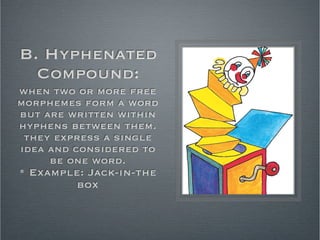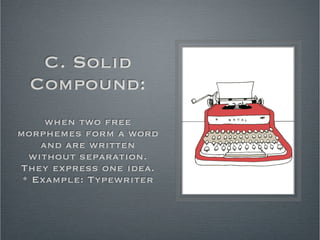Words
- 1. Words
- 2. Definition of Words by Prof. Charles Hockett: A word is any segment of a sentence bounded by successive points at which pausing is possible.
- 3. Example: Since (p) the (p) streetlamp (p) is (p) out, (p) I (p) must (p) call up (p) our (p) councilman. (P) means pause and every segment between two Ps is a word
- 4. Simple and Complex Words 1. Simple words consist of single free morpheme. * Example: long. 2. Complex words contain, as their ICs, either two bound forms or a bound and a free form. * Example of two bound forms as ICs: tele | vise. * Example of bound and free forms as ICs: eras | er
- 6. The third class of words is compound words. These have free forms, usually two words joined together. *Example: green | house. ! A small number of compound words have three or four free forms joined together as coordinate immediate constituents. *Example: happy - go - lucky.
- 8. a. Open Compound when two or more free morphemes form a word but are written separately. they express a single idea and considered to be one word. *Example: fruit salad.
- 9. B. Hyphenated Compound: when two or more free morphemes form a word but are written within hyphens between them. they express a single idea and considered to be one word. * Example: Jack-in-the box
- 10. C. Solid Compound: when two free morphemes form a word and are written without separation. They express one idea. * Example: Typewriter


